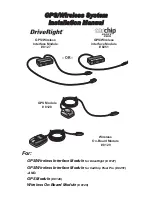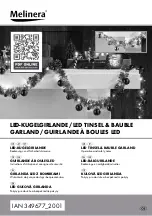
D-5
E2Q5
E2Q
5
Precautions
Power supply
Do not impose an exessive voltage on the E2Q2, otherwise it
may explode or burn.
Do not connect an AC power supply to any DC model. If AC
power (100 VAC or more) is supplied to the sensor, it may ex-
plode or burn.
Be sure to abide by the following precautions for the safe op-
eration of the Sensor.
Wiring
Power Supply Voltage and Output Load
Power Supply Voltage
Make sure that the power supply to the Sensor is within the
rated voltage range. If a voltage exceeding the rated voltage
range is supplied to the Sensor, it may explode or burn.
Load Short-circuiting
Do not short-circuit the load, otherwise the Sensor may be
damaged.
Connection without Load
Do not connect the power supply to the Sensor with no load
connected, otherwise the internal elements may explode or
burn.
Operating Environment
Do not use the Sensor in locations with explosive or flamma-
ble gas.
Design
Effects of Surrounding Metal
Provide a minimum distance between the Sensor and the sur-
rounding metal as shown in the table below.
Mutual Interference
If more than one Sensor is located in parallel, ensure to main-
tain enough space between adjacent Sensors to suppress
mutual interference as provided in the following diagram.
Power Reset Time
The Sensor is ready to operate within 300 ms after the Sensor
is turned ON. If the load and Sensor are connected to inde-
pendent power supplies respectively, be sure to turn ON the
Sensor before supplying power to the load.
Power OFF
The Proximity Sensor may output a pulse signal when it is
turned OFF. Therefore, it is recommended that the load be
turned OFF before turning OFF the Proximity Sensor.
Power Supply Transformer
When using a DC power supply, make sure that the DC power
supply has an insulated transformer. Do not use a DC power
supply with an auto-transformer.
Sensing Object
The sensing distance of the Proximity Sensor vary with the
metal coating on sensing objects.
Wiring
High-tension cables
Wiring through Metal Conduit:
If there is power or high-tension line near the cable of the
Proximity Sensor, wire the cable through an independent met-
al conduit to prevent against Proximity Sensor damage or
malfunction.
!
Caution
Correct Use
Effects of Surrounding Metal (Unit: mm)
Model
Length
A
B
C
E2Q5-N20
##
-M1
45
0
0
E2Q5-N40M
##
- M1
120
300
40
Sensor
Brown
Blue
Black
Load
Incorrect
A
B
C
Mutual Interference (Unit: mm)
Model
Length
A
E2Q5-N20
##
-M1
40
E2Q5-N40M
##
- M1
150
A
Side-by-side
























